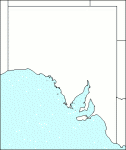Family: Orchidaceae
Diuris longifolia
Citation:
R. Br., Prod. Fl. Nov. Holl. 316 (1810).
Synonymy: D. corymbosa Lindley, Sketch Veg. Swan Riv. Col. li (1840).
Common name: Bulldogs, wallflower (or tall or common) donkey-orchid, wall-flower orchid.
Description:
Stouter than most other members of the genus, 10-45 cm high; tubers snake-like, 2-15 cm long; leaves 2 or 3, linear or lanceolate, acute, channelled, usually of unequal length, 7-20 cm long, 4-12 mm wide.
Flowers large, sometimes solitary, more often 2-5 on slender pedicels in a loose raceme, yellow, brown and purple, the colours suffusing into each other as in the wall-flower, rarely wholly yellow, dorsal sepal much shorter than the other segments, very broad and rounded, c. 10 mm long; lateral sepals green, linear, rather stout, spreading horizontally, with blunt oblique points, usually parallel but occasionally crossed, 18-19 mm long; petals stalked, recurved or spreading; the claw c. 4 mm long; the lamina oval or elliptical, c. 16 mm long; labellum c. 10 mm long, dark-brown, purple and yellow blended; lateral lobes nearly as long as the midlobe, wide, obcuneate, margins entire, the anterior rounded, recurved, c. 10 mm long (from the base of the labellum); middle lobe about the same length or a little longer, its anterior border rounded and retuse; lamina with a single (very rarely double) raised line at its extreme base merging into a central keel extending to the tip; anther without a point, about the same height as the viscid disk of the rostellum; lateral appendages about the same height, linear-falcate, with an irregular upper border
Published illustration:
Fitzgerald (1894) Australian orchids, vol. 2, pt 5; Cady & Rotherham (1970) Australian native orchids in colour, pl. 15; Hoffman & Brown (1984) Orchids of south-west Australia, p. 366.
|
|
Distribution:
|
Forming small colonies in various soils in grassland, heathland or forest and flowering more freely after fires.
W.Aust.; N.S.W.; Vic.; Tas.
|
Conservation status:
native
Flowering time: July — Nov.
|

SA Distribution Map based
on current data relating to
specimens held in the
State Herbarium of South Australia
|
Biology:
Locally common. Peloric or subpeloric forms are occasionally encountered in which the labellum is a simple petal shape. In the narrow sense, D. longifolia is a purely W. Aust. form and S. Aust. plants may be referred to D. corymbosa. Putative hybrids have been reported with D. brevifolia (SL), D. lanceolata (SL), D. maculata (SL) and D. palustris (MU).
Author:
Not yet available
|

